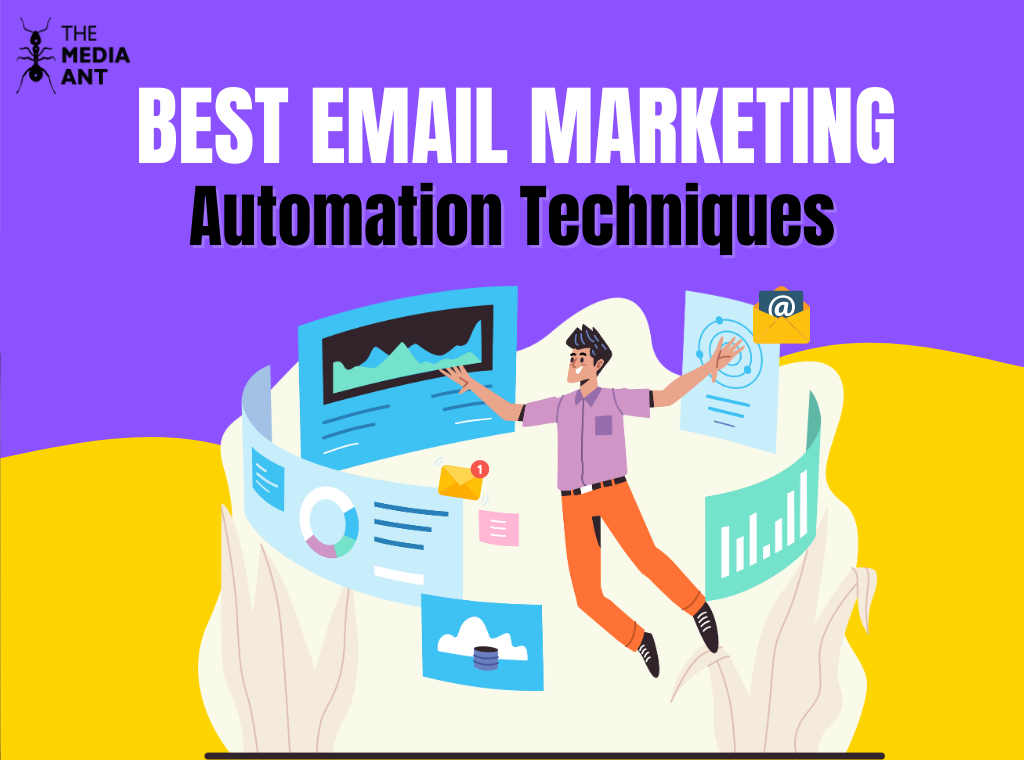Email marketing automation has completely transformed the way businesses interact with their audience, enabling them to send personalized and timely messages on a large scale. By utilizing technology and data-driven strategies, businesses can streamline their email marketing efforts, nurture leads, and achieve conversions more effectively than ever before. These techniques encompass a wide range of automation tools and strategies that optimize every aspect of the email marketing process, including list segmentation, content personalization, triggered emails, and analytics.
In today’s highly competitive digital world, where consumers are bombarded with marketing messages across multiple channels, email marketing automation stands out as a powerful tool for cutting through the noise and delivering relevant and engaging content to the right audience at the right moment. Whether you’re a small business aiming to expand your customer base or a large enterprise looking to maximize the impact of your email campaigns, mastering these automation techniques is crucial for staying ahead of the competition and achieving your marketing objectives.
Within this comprehensive guide, we will delve into the top email marketing automation techniques that will help you increase sales, nurture customer relationships, and drive business growth. From segmentation and personalization to triggered emails and predictive analytics, we will cover everything you need to know in order to harness the full potential of email marketing automation and take your marketing strategy to new heights.
10 Best Email Marketing Automation Techniques to Boost Sales
1. Segmentation Strategies
Segmentation Strategies involve dividing your email list into smaller, targeted groups based on specific criteria like demographics, past purchases, or engagement behavior. This helps you send highly relevant content to each segment, which can increase open rates, click-through rates, and conversions.
2. Dynamic Content Personalization
Dynamic Content Personalization allows you to customize the content of your emails based on individual subscriber data. This could include inserting the recipient’s name, referencing past purchases, or tailoring product recommendations based on browsing history. Personalized emails are more likely to resonate with recipients and drive engagement.
3. Automated Trigger Emails
Automated Trigger Emails are automatically sent in response to specific actions or events, such as a welcome email for new subscribers, abandoned cart reminders, or follow-up emails after a purchase. By automating these messages, you can deliver timely, relevant communications that keep your brand top-of-mind and drive conversions.
4. A/B Testing Automation
A/B Testing Automation, or split testing, involves sending two versions of an email to different segments of your audience to see which performs better. Automation tools can streamline the A/B testing process by automatically sending the winning variant to the rest of your list, optimizing your email campaigns for maximum effectiveness.
5. Behavioral Automation Flows
Behavioral Automation Flows are a series of emails triggered by specific actions or behaviors, such as clicking on a link, visiting a certain page on your website, or abandoning a shopping cart. These automated workflows allow you to deliver targeted messages that guide subscribers through the customer journey and drive conversions.
6. Integration with CRM and ESP
Integrating your email marketing platform with your customer relationship management (CRM) system and email service provider (ESP) enables seamless data sharing and synchronization. This integration allows you to leverage customer data from your CRM to create highly targeted email campaigns and track results more effectively.
7. Predictive Analytics
Predictive analytics uses data mining, machine learning, and statistical modeling techniques to forecast future outcomes based on historical data. By analyzing past behavior and engagement patterns, predictive analytics can help you anticipate customer preferences, identify high-value prospects, and personalize email content for maximum impact.
8. Dynamic Product Recommendations
Dynamic product recommendation emails use algorithms to automatically generate personalized product suggestions for individual subscribers based on their past purchases, browsing history, or preferences. These targeted recommendations can increase cross-selling and upselling opportunities, driving revenue and customer loyalty.
9. Lifecycle Marketing Automation
Lifecycle marketing automation involves sending targeted messages to subscribers at different stages of the customer lifecycle, from acquisition to retention and re-engagement. By delivering relevant content and offers tailored to each stage, you can nurture leads, drive conversions, and maximize customer lifetime value.
10. Comprehensive Reporting and Analysis
Comprehensive reporting and analysis tools provide insights into the performance of your email campaigns, allowing you to track key metrics such as open rates, click-through rates, conversion rates, and revenue generated. By analyzing these metrics, you can identify trends, optimize your campaigns, and make data-driven decisions to improve ROI.
Why leverage Email Marketing in 2024?
In 2024, utilizing email marketing remains an essential strategy for businesses aiming to connect with customers and boost sales for various compelling reasons:
1. Direct Communication
Email marketing provides a direct line of communication to customers’ inboxes, where they are more likely to engage with promotional content compared to other channels.
2. Personalization Opportunities
Advanced email marketing automation tools enable businesses to personalize messages based on individual preferences, behaviors, and purchase history, enhancing relevance and effectiveness.
3. Automation Efficiency
Automation streamlines repetitive tasks such as segmenting email lists, sending triggered emails, and analyzing campaign performance, saving time and resources while ensuring consistency and timeliness.
4. Targeted Marketing
Segmentation allows businesses to divide their email lists into smaller, targeted groups, delivering highly relevant content to each segment and increasing the likelihood of engagement and conversions.
5. Measurable Results
Email marketing platforms offer comprehensive reporting and analysis tools that allow businesses to track key metrics in real-time, enabling continuous optimization and improvement of campaigns for maximum ROI.
6. Customer Lifecycle Management
Lifecycle marketing automation enables businesses to send targeted messages to subscribers at different stages of the customer journey, from acquisition to retention and re-engagement, nurturing relationships and driving long-term loyalty.
7. Cost-Effectiveness
Compared to traditional advertising channels, email marketing offers a high return on investment (ROI) with lower costs, making it accessible to businesses of all sizes and budgets.
8. Mobile Accessibility
With the increasing use of smartphones and mobile devices, email marketing allows businesses to reach customers wherever they are, delivering responsive and mobile-friendly content for optimal user experience.
9. Compliance and Privacy
With growing concerns about data privacy and regulations such as the General Data Protection Regulation (GDPR), email marketing platforms ensure compliance and provide features to protect customer privacy.
10. Proven Effectiveness
Despite the rise of new digital marketing channels, email marketing continues to deliver results, with studies consistently showing high engagement rates, conversion rates, and ROI compared to other channels.
Conclusion
To summarize, it is crucial for businesses to acquire expertise in email marketing automation techniques in order to remain competitive in the current digital environment. By utilizing automation tools and strategies, businesses can simplify their email campaigns, send customized messages, and enhance engagement and conversions. Regardless of whether you are a small business or a large corporation, visit The Media Ant website, which will help you incorporate these techniques and can assist you in maximizing your email marketing endeavors, fostering customer relationships, and ultimately attaining your sales and marketing goals more efficiently and effectively.
FAQs of Email Marketing Automation Techniques
What are email marketing automation techniques?
Email marketing automation techniques involve using software and technology to automate various aspects of email marketing campaigns, such as sending targeted messages based on subscriber behavior, segmenting email lists, personalizing content, and analyzing campaign performance.
How can email marketing automation benefit my business?
Email marketing automation can benefit your business in several ways, including saving time and resources, improving efficiency and consistency, increasing engagement and conversions, enhancing customer relationships through personalized communication, and maximizing ROI through data-driven optimization.
What types of emails can be automated?
Various types of emails can be automated, including welcome emails for new subscribers, abandoned cart reminders, order confirmations, post-purchase follow-ups, re-engagement campaigns for inactive subscribers, birthday or anniversary emails, and drip campaigns delivering content or promotions over time.
What is an email marketing automation tool?
An email marketing automation tool is software designed to streamline and automate various aspects of email marketing campaigns, such as creating and sending emails, managing subscriber lists, segmenting audiences, personalizing content, tracking campaign performance, and analyzing results.
How does AI help in email automation?
Artificial intelligence (AI) plays a significant role in email automation by enabling advanced personalization, predictive analytics, and optimization. AI algorithms can analyze vast amounts of data to identify patterns, predict future behavior, segment audiences, personalize content, and automate decision-making processes, ultimately improving the effectiveness and efficiency of email marketing campaigns.





